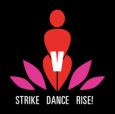 |
| By Kurt Baty – Own work, CC BY-SA 3.0 |
I know that, and yet, there is still something so appealing about believing that the world is black and white, that things are either good or bad, and so are people. It is both efficient in terms of time (I can decide whom or what to invest my energy in and when to walk away) and emotionally satisfying (no agonizing over the minutiae, just make a judgment and move on).
And it’s rarely true. In fact, I’m pretty sure the only things that are black and white are those two crayons in the box. (Don’t get me wrong: there are some things that, in my mind, are Absolutely Wrong and I will continue to acknowledge the nuances within, and still condemn the behavior.)
I am a social-justice-minded person. I have strong values and strong opinions and I love fighting for space for those without it, hearing new voices, expanding my view of the world. And sometimes, I read about something in the news and let the ethical warrior side of me take over. I re-post things and sign petitions and vow to boycott companies and sometimes, that feels like the exact right thing to do in terms of aligning my behavior with my values. But sometimes I get conflicted.
Like when scandals come up involving giant companies like Uber. While I went along with the suggestions to delete the app from my phone and vow to use other rideshare companies when the news came out about the CEO’s reprehensible behavior and choices that don’t support my values, I was still a little worried. Mostly because I thought about the drivers – the vast majority of whom I’ve ridden with that are pleasant and professional and friendly. The drivers who are working in this flexible gig-economy world because they have other jobs and obligations that don’t fit in with an 8-5 job. Maybe they’re going to school or parenting or taking care of their aging parents. Perhaps they don’t speak English well enough yet to get another type of job or this is the thing they’re doing while they train for a better job. Maybe they’re retired and on a fixed income and this is the way they put aside a little money in case of emergency. Doesn’t my boycotting the company they work for impact them more than it impacts the CEO, at least percentage-wise? He’s already a millionaire. Maybe losing some revenue will affect his company’s bottom line a bit and perhaps his ego will take a big blow, but for the driver who depends on every paycheck, I may be creating more hardship for them than their employer does.
Two weeks ago, I saw a message on a Facebook group I’m part of (a FB group that is all about supporting and empowering women), asking if anyone would be interested in joining a day-long women’s empowerment and employment event to provide a breakout session workshop. They were specifically looking for content that centered around wellness and well-being and self care. I was hooked. After a few emails, I realized that the event was being put on for women who are Uber drivers in Seattle and I admit to having a twinge of discomfort. Digging a little deeper, I discovered that this event centered around helping these women, who are mostly part-time drivers, understand the gig economy a little better and enabling them to find other ways to get into it to support themselves. Uber’s partner for this event is a local organization called Tabor 100, an “association of entrepreneurs and business advocates who are committed to economic power, educational excellence and social equality for African-Americans and the community at large.”
Whoa.
I signed up. Other breakout sessions included one that helped women envision their own paths as entrepreneurs or career growth, one dedicated entirely to self-care, and another that helped women learn to manage and grow their wealth. They provided a beautiful continental breakfast, a full lunch, free headshots by professional photographers, and the opportunity to get your business certified with the Office of Minority and Women’s Business Enterprises. Oh, and childcare. Full. Day. Childcare. For free.
This day was truly about empowering women to be part of the sharing economy in a way that works for them, with a ton of information about the opportunities that are out there as well as tips and tricks to more fully engage in those opportunities. My workshop centered on using mindfulness to ground yourself in your values, create personal boundaries, and find joy everywhere you go.
I vowed to go in with an open mind and I came out with a full heart. This is the kind of company (at least the Seattle version of it) that I can say I’m proud to have been associated with, even for just one day. This was not some gimmick to show the world that Uber is a friendly company and win back shareholders. I don’t even know that it was widely publicized. This was an honest attempt to acknowledge the employees of this company, remind them how important they are, and help lift them up.
So, it’s complicated. I reinstalled my app because I hope to see some of these women on the road soon and get to know them a little better.









